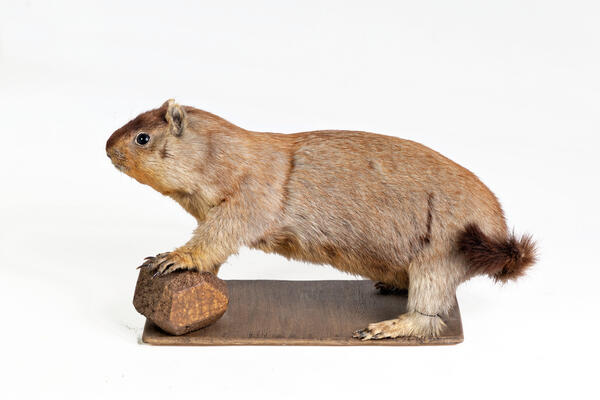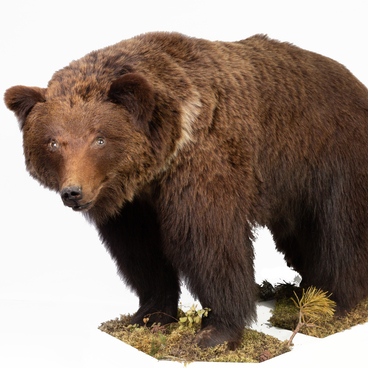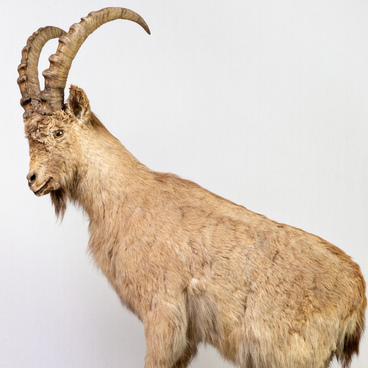This is the largest in Russia and, at the same time, a rare species of marmots found in the mountainous regions of the Far East and Eastern Siberia. It got its name from the black or black-brown ‘cap’, i.e. a spot on the front of the head.
Marmots arrange their burrows among the stones very carefully and imperceptibly. The entrance to the burrow is always under a large stone. There is no dug earth near it, and the paths are hardly noticeable. Black-capped marmots live in families. Usually a family that occupies the same burrow system and uses a common feeding area includes a couple and offspring of the last 2-3 years. Several families living close to each other form a colony. This is a community that has its own complex visual and audio signaling.
Marmot colonies usually live in a system of 4-5 summer burrows, about 10 temporary burrows and one wintering burrow. The chambers and passages of the wintering burrow are located at a shallow depth, in a layer of soil that freezes. To insulate it, marmots trim the walls of the nesting chamber with a mixture of dry grass and earth. When the cold weather comes, the passages connected with the nest chamber are caulked with dry grass. Hibernation begins from the second half of September. All members of the same settlement fall asleep in the nest chamber all together clinging tightly to each other. If there are a lot of individuals in the colony, then marmots can even lie in two tiers. Hibernation lasts 6-7 months or more. Awakening occurs in May. Although the snow melts only in mid-June. And for 3-4 weeks before coming to the surface, marmots mate. In one brood, there are an average of 5-6 young marmots. Marmots eat mostly plant foods, such as blueberries, cranberries, crowberries, and seeds of Siberian dwarf pine. However, in the spring, in order to quickly restore the fat reserves spent over the winter, they also willingly eat animal food, such as small birds, mammals, earthworms, and insects.
Marmots arrange their burrows among the stones very carefully and imperceptibly. The entrance to the burrow is always under a large stone. There is no dug earth near it, and the paths are hardly noticeable. Black-capped marmots live in families. Usually a family that occupies the same burrow system and uses a common feeding area includes a couple and offspring of the last 2-3 years. Several families living close to each other form a colony. This is a community that has its own complex visual and audio signaling.
Marmot colonies usually live in a system of 4-5 summer burrows, about 10 temporary burrows and one wintering burrow. The chambers and passages of the wintering burrow are located at a shallow depth, in a layer of soil that freezes. To insulate it, marmots trim the walls of the nesting chamber with a mixture of dry grass and earth. When the cold weather comes, the passages connected with the nest chamber are caulked with dry grass. Hibernation begins from the second half of September. All members of the same settlement fall asleep in the nest chamber all together clinging tightly to each other. If there are a lot of individuals in the colony, then marmots can even lie in two tiers. Hibernation lasts 6-7 months or more. Awakening occurs in May. Although the snow melts only in mid-June. And for 3-4 weeks before coming to the surface, marmots mate. In one brood, there are an average of 5-6 young marmots. Marmots eat mostly plant foods, such as blueberries, cranberries, crowberries, and seeds of Siberian dwarf pine. However, in the spring, in order to quickly restore the fat reserves spent over the winter, they also willingly eat animal food, such as small birds, mammals, earthworms, and insects.
Some features of molting also help the animal to survive in adverse conditions. Old hairs fall out after at least new ones grow a little, so that the body of the black-capped marmot is not exposed even in the midst of molting. This helps to keep warm at low temperatures.



